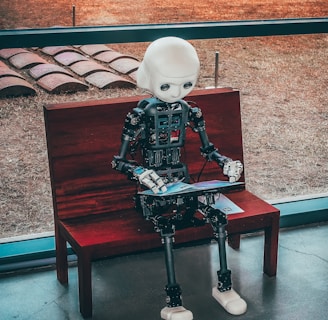How AI is Changing Technical Writing (and Why It’s Not Coming for Your Job)


How AI is Changing Technical Writing in 2025: Tools, Trends & Tectonic Shifts
AI isn’t knocking at the door of technical writing—it’s already sitting on the couch, asking for Wi-Fi.
In 2025, technical writers aren’t just competing with AI tools—they’re collaborating with them, redefining what it means to write “documentation,” and finally ditching the Ctrl+C, Ctrl+V life for something way smarter.
If you're a tech writer sharpening your quill (or your keyboard), here's how AI is flipping the script—without replacing the author.
1. AI Is Now Your Draft Buddy, Not a Threat
Let’s get this out of the way: AI isn’t here to replace technical writers—it's here to remove the repetitive, mechanical bits.
What AI handles well:
Summarizing product specs into first-draft docs
Translating dev-speak into plain English
Suggesting glossary terms and reusable components
Formatting Markdown, tables, or changelogs
You’re still the human who ensures clarity, structure, empathy, and accuracy. AI just turns the blank page into a head start.
2. Content Automation and the Rise of Docs-as-Code
SaaS companies are automating technical content with:
AI-generated API references from OpenAPI/Swagger
Release note assistants pulling from Git commits or Jira
Style-guide-aware assistants that flag passive voice, jargon, or broken links
Bonus:
If your doc stack is already “docs-as-code” (Markdown, Git, CI/CD), AI can slot right into your pipeline like a polite bot intern.
3. Context-Aware Documentation is the New Standard
Imagine this:
Your docs know the user’s plan tier, platform, and usage behavior—and adjust examples accordingly. That’s contextual AI-powered documentation.
What’s emerging:
Personalized code snippets
Dynamic walkthroughs based on user environment
Embedded assistants inside documentation (not just chatbots—smarter than that)
In 2025, docs aren’t static. They’re alive.
4. AI-Powered Glossaries and Taxonomy Management
Maintaining consistent terminology across 300 pages of docs is the equivalent of playing whack-a-mole blindfolded.
AI helps by:
Flagging inconsistent terms (“sign-in” vs “login”)
Auto-linking terms to glossary definitions
Suggesting synonym unification
Think Grammarly, but for tech docs—with a memory and a mission.
5. Better A/B Testing for Documentation
Want to know if “Quick Start” or “Getting Started” works better? AI tools can now:
Run multivariate tests
Track CTA engagement in documentation
Suggest restructuring based on usage flow
The doc becomes a growth tool, not just a knowledge dump.
6. Real-Time Localization & Translation (That Doesn’t Suck)
Machine translation used to be a disaster. Now, AI-assisted localization tools are shockingly usable.
Expect:
Neural translation that maintains tone and intent
Glossary-aware localization
In-context previews across 10+ languages
Write once, AI-localize everywhere (with human QA at the final gate, of course).
7. The Rise of the “Prompt Engineer” Tech Writer
In 2025, a new hybrid role is emerging:
Technical Writer + Prompt Engineer.
These are writers who:
Craft system prompts for internal chatbots
Design AI-driven onboarding flows
Tune generative tools to follow product voice & tone
You're not just writing for humans—you’re writing through machines.
8. Knowledge Bases That Learn and Evolve
AI in support content isn't just reactive—it’s predictive.
Smarter knowledge bases now:
Auto-surface trending issues from support tickets
Flag outdated or underperforming articles
Suggest content gaps based on user behavior
Your help center is becoming a brain, not just a binder.
9. Less Burnout, More Strategy
AI takes the grunt work. You get:
More time for IA planning
Better focus on UX writing
Freedom to tackle dev collaboration, audits, and roadmap alignment
Tech writing becomes less like a conveyor belt and more like editorial architecture.
TL;DR: AI is Your New Coworker, Not Your Competition
If you're worried about AI replacing tech writers, relax.
It’s replacing tedium.
It’s replacing redundancy.
It’s replacing the manual misery.
But you, the one who makes complexity sound simple and boring topics feel necessary? You're irreplaceable.
